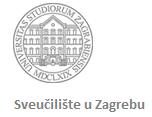Naziv kolegija: Nineteenth-Century American Short Fiction
Undergraduate Elective
Nineteenth-Century American Short Fiction
Prof. Charles L. Crow
Thursday 11:45-12:30, D-5
Friday 2:45-4:15, A-123
charleslcrow@yahoo.com
Course requirements: regular attendance, and readings completed before class discussions. Two short essays of approximately 1000-1250 words each. Final examination.
Note 1: I welcome enthusiastic class discussion, including constructive disagreement, and conversations continued after class, in my office, and by e-mail.
Note 2: There may be some modification of this syllabus after the pace of the class is established.
Note 3: Most of these stories are available on the internet. In some cases it may be necessary to provide a copy for duplication.
Week 1. 8-9 March
Introductions. Overview of periods, issues in 19th century American literature and culture. A few American paintings shown to illustrate trends and themes. Two brief folk tales from non-white cultures represent voices to be heard later in the semester.
Charles Brockden Brown, “Somnambulism”
Washington Irving, “Rip van Winkle”
Week 2: 15-16 March
The “Dark Romantics” and their quarrel with Emerson.
E. A. Poe, “The Cask of Amontillado,” “Hop Frog.
Nathanael Hawthorne, “Alice Doan’s Appeal.” “Young Goodman Brown.”
Week 3: 22-23 March
From Romanticism to Realism
Herman Melville, “The Bell Tower,” “Bartleby the Scrivener”
Rebecca Harding Davis, “Life in the Iron Mills”
Week 4: 29-30 March
Harriet Prescott Spofford, “Circumstance”
S. L. Clemens (Mark Twain) “A True Story,” selection from “Old Times on the Mississippi.” “The Man That Corrupted Hadleyburg”
Week 5: 5-6 April
Two anti-war stories by realist masters.
Mark Twain, “The War Prayer”
W. D. Howells, “Editha”
Note: April 6 is Good Friday
Week 6: 12-13 April
The “American Girl” and women’s regional realism
Henry James, “A Bundle of Letters”
M. E. Wilkins Freeman. “The Revolt of Mother,’ “A Church Mouse”
Week 7: 19-20 April
Regional realism, continued
Sarah Orne Jewett, “A White Heron,” “The Foreigner,” “The Circus at Denby.”
Joel Chandler Harris, “The Wonderful Tar Baby,” “How Mr. Rabbit was too Sharp for Mr. Fox.”
Week 8: 26-27 April
Race and the South
Charles Chesnutt, “The Passing of Grandison” “The Sheriff’s Children,” “The Dumb Witness”
Paul Laurence Dunbar, “The Lynching of Jube Benson”
Week 9: 3-4 May
Race and the South, continued
Alice Dunbar Nelson, “Sister Josepha”
Grace King, “The Little Convent Girl”
George Washington Cable, “Jean-Ah Poquelin”
Week 10: 10-11 May
Kate Chopin’s Louisiana:
“Désirée’s Baby,” “The Story of an Hour,” “The Storm,” “A Pair of Silk Stockings,” “A Respectable Woman,” “A Gentleman of Bayou Teche.”
Week 11: 17-18 May
Naturalism and beyond.
Frank Norris, “A Deal in Wheat”
Stephen Crane, “The Monster”
Jack London, “To Build a Fire,” “South of the Slot”
Week 12: 24-25 May
Willa Cather’s Nebraska:
“Old Mrs. Harris,” “Neighbor Rosicky”
Week 13: 31 May-1 June
A feminist classic and a new voice.
Charlotte Perkin’s Gilman, “The Yellow Wall-Paper”
John M. Oskison, “The Problem of Old Harjo”
Week 14: 7-8 June
Thursday is Corpus Christi
Theodore Dreiser, “Typhoon”



